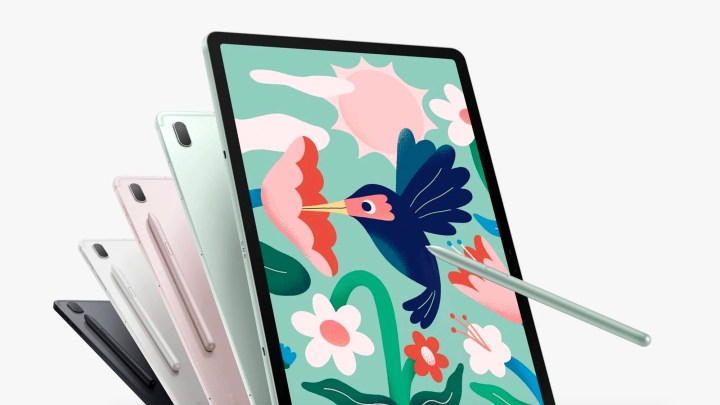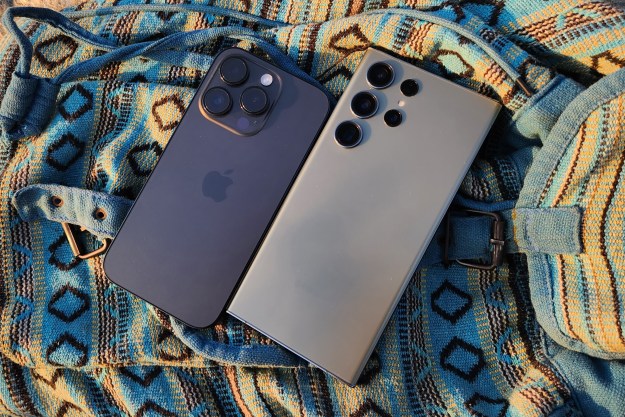Samsung has announced the Galaxy Tab S7 FE 5G tablet, a new version of the existing Galaxy Tab S7 Plus tablet released in August 2020. It’s the latest entry in Samsung’s growing range of “FE” devices, which includes the Galaxy S20 FE and started out with the Galaxy Note 7 Fan Edition. FE, as is now clear, stands for Fan Edition, and indicates Samsung has made some changes to the original non-FE model.
What’s new here? The Galaxy Tab S7 FE 5G is a new version of the S7 Plus, rather than the 11-inch S7 tablet, meaning it has a 12.4-inch screen with a 2560 x 1600 pixel resolution. Unfortunately, it’s a TFT screen and not the wonderful 120Hz refresh rate Super AMOLED display from the Tab S7 and S7 Plus. The 608-gram metal tablet is very thin at just 6.3mm, and comes in a selection of colors — black, silver, green, or pink. The Galaxy Tab S7 Plus came in the attractivemystic bronze, which is unfortunately missing here.

The name gives away the primary new feature on the Tab S7 FE 5G. Yes, it comes as standard with a 5G modem, ready to connect to the fastest mobile data connection, provided you pay out for a new contract or upgrade your current one. The Tab S7 tablets both had the option of adding a 4G or a
Samsung’s not saying which processor the Galaxy Tab S7 FE 5G has inside, only that it’s an octa-core chip with two 2.2GHz cores and six 1.8GHz cores. There are two versions available, one with 4GB of RAM and 64GB of internal storage space, and a second model with 6GB of RAM and 128GB of storage. Both have a MicroSD card slot. The software is Android 11 with Samsung’s OneUI 3.1 over it, and a 10,090mAh battery powers the tablet with 45-watt fast charging.
A Samsung S Pen stylus comes with the tablet, plus the Canva app comes preinstalled. There’s also a six-month trial of drawing app Clip Studio Paint, and the note-taking app Noteshelf is included for free as well. This appears to be the extent of the positive changes over the original Galaxy Tab S7 Plus, but aside from the screen, there is another downgrade to highlight. The cameras have changed to a single 8-megapixel rear camera and a 5MP selfie camera on the front, compared to a 13MP and 5MP dual camera on the Galaxy Tab S7 and S7 Plus.

While it’s unfortunate the cameras are different, no one buys a tablet to take photos, but the screen downgrade hurts. The Galaxy Tab S7’s screen is one of the tablet’s standout features, and a top reason to buy one. The upside to these changes comes in the price. Samsung will release the Galaxy Tab S7 FE 5G on June 18, although pre-orders will be live from June 2, and the price has been set at 589 British pounds, or around $835, for the 64GB model and 629 pounds/$891 for the 128GB. This is cheaper than both the Tab S7 and Tab S7 Plus Wi-Fi-only models.
At the time of writing, we don’t have U.S. availability details or prices for the Galaxy Tab S7 FE 5G, but will update this article should they be announced. The existing Samsung Galaxy Tab S7 is featured on our Best Tablet list as our recommended Android tablet.
Editors' Recommendations
- T-Mobile still has the fastest 5G, but its rivals are catching up
- The 5G speed race is over and T-Mobile has won
- The Galaxy Tab S9 Ultra looks like one of 2023’s most exciting tablets
- Moto G Power 5G adds a flagship feature to a budget phone
- Here’s our very first look at the Samsung Galaxy Tab S9 Plus



